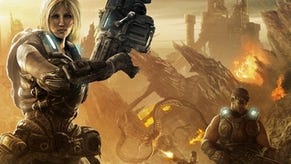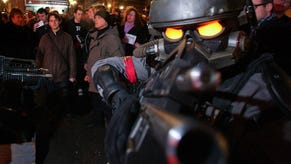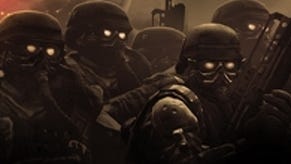Killzone 2
Guerrilla outlines its multiplayer strategy.
We doubt you'll cry foul if we point out Sony's E3 conference was boring, but slotting between PS3 appointments elsewhere it's clear it didn't have to be: Resistance 2 was in grisly form, Sucker Punch is showing superhero free-roamer inFamous, and Media Molecule is stealing our hearts in LittleBigPlanet, as you'll be able to read tomorrow. Even as you were turning the air purple in the comments thread, we were watching Guerrilla's Eric Boltjes outline the firm's Killzone 2 multiplayer strategy.
Boltjes' session was hands-off - a slideshow with some video attachments, really - but it still happily ran to the 50-minute mark as he ripped through every detail. Killzone 2 is a 32-player online game, he explained, with a range of game-types, mix-and-match character classes, Call of Duty 4-style character progression and all sorts of unlockable options, backed up by heavyweight community services like leaderboards and clan management features.
The maps will cover various themes and locations, and will be optimised for groups of different sizes (eight versus eight, duels, etc.) albeit without hard-coded player limits to prevent you putting 32 players on a smaller map. But we're only shown glimpses of the maps, so it's hard to gauge anything about layout. What we are told is that there are several game-types (identified as assassination, body count, team deathmatch, capture-and-hold and search-and-destroy - although we hear something about "search-and-retrieve" later), that each map will support all of the game-types (called "mission types" by the developers), and that it's possible to play through multiple game-types within the same session on a single level. You could begin with capture-and-hold, for instance, then go to team deathmatch for round two and finish on assassination, and the winning team would be the one that won the most rounds.
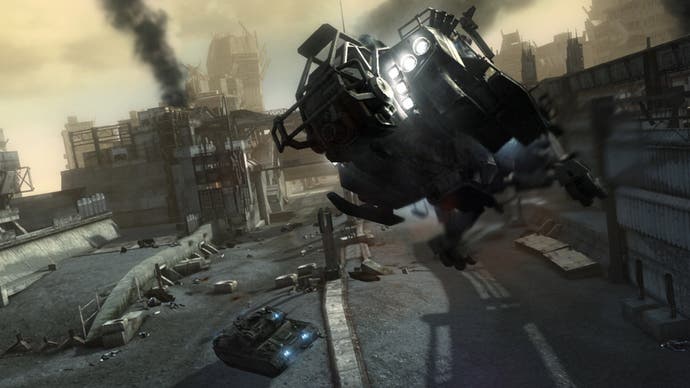
It will also be possible to set up Custom Matches that specify the fine details of each (for instance, you can change the bomb timer length or defusal time on search-and-destroy). You can also enforce more esoteric restrictions, like reducing the in-game arsenal to nothing but sniper rifles. Boltjes goes through a lot of menu screenshots to demonstrate other customisation options: when joining someone else's session, for example, you can specify preferred maps or mission types, the region of the world you'd like to play in, the number of people that should be on the server, whether you're playing with friends, the average ranking of the competition and whether the game's passworded.
Individually, players will be able to specify a certain "badge" (class) to play as based on their existing preferences, and each of these will have two special attributes or abilities that distinguish it from the others. There's assault (special armour and a boost function), the scout (cloak, enemy-highlighting), medic (revive team-mates, dispense health-packs), engineer (repair things, deploy sentry guns), tactician (deployable spawn points, air-strike support from a gunship) and saboteur (disguise and something we can't make out on our notepad - sorry!). Those who find the initial classes restrictive will be able to combine two badges, with the resulting hybrid class inheriting a special ability from each originating class, so you could be a stealthy medic or an assault engineer, for instance.
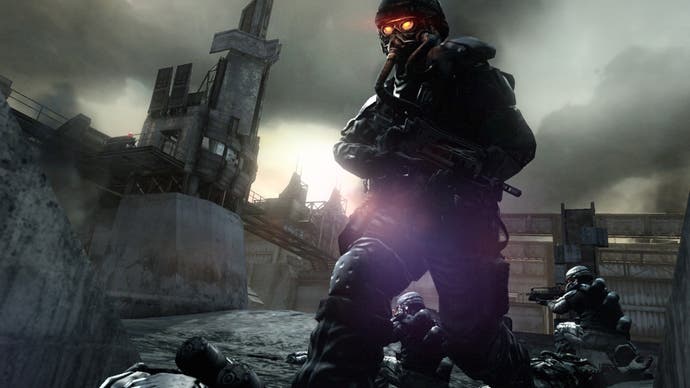
More broadly, individuals will progress by accumulating experience and levelling up, with 12 different ranks to attain and 46 "ribbons and medals" to unlock. To rank up, you gather points by killing and doing team-specific things like revivals and completing objectives, while ribbons and medals are a bit like mini-Trophies, unlocked by getting a certain number of headshots, for instance. Guerrilla is aware that it needs to support the endgame too, and promises special honour ranks for the top percentile. Other initiatives will undoubtedly follow post-launch.
One of Guerrilla's key objectives, Boltjes says though, is to inspire team-play, and there's a lot of stuff going on in-game weighted to this besides the class system. You can form four-man squads, most notably, with a leader and your own private voice channels so you can coordinate your actions. If you die, you then have the option of respawning alongside your squad-leader, albeit presumably after a cool-down time, something that wasn't covered in the initial presentation.






